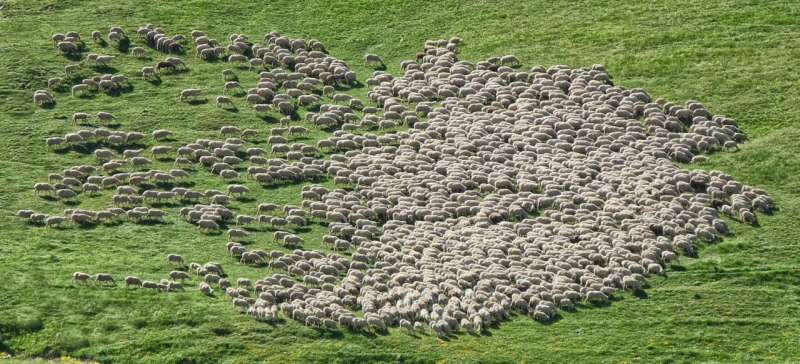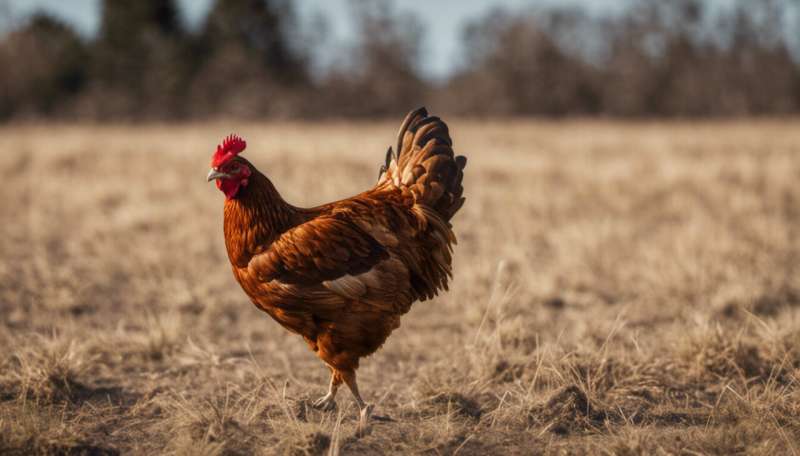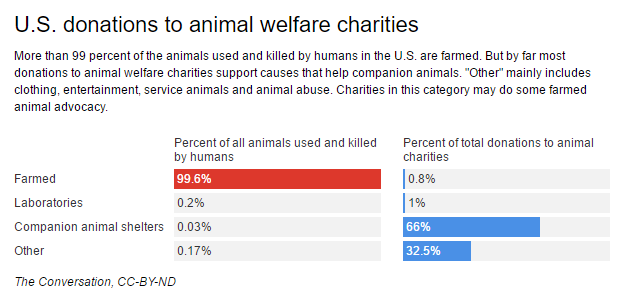Want to help animals? Don't forget the chickens

Summertime is "" – go into heat and give birth to more adorable kittens than animal shelters can give away.
That's why local humane societies encourage prospective pet owners to bring cats into their homes in June, also known as . like the American Society for the Prevention of Cruelty to Animals also step up their appeals to the public for donations to fund widespread spaying and neutering that will help bring the companion animal population under control.
But a growing number of animal advocates insist that these well-intended, altruistic efforts should . They're using mathematical reasoning to deliver a sharp message to mainstream animal charities and their donors: The money you spend to help cats, dogs and other human companions could be used more effectively to improve the lot of chickens, pigs and other animals raised in farms for food.
who has long been troubled by society's hypocritical treatment of different kinds of animals, I find that this argument makes sense. And as a and , I believe this demand for what supporters call "" has a chance to reshape the animal protection movement.
A big business
When it comes to making life good for our beloved companion animals, our generosity knows few bounds. Americans on feeding, grooming and boarding our pets, as well as paying for their medical care and adoption fees.
But sadly, we also every year because the supply of companion animals outpaces demand. For a nation of unabashed animal lovers, that's a sad and shocking statistic.
That contradiction may explain why so many Americans give generously to charities that promote animal welfare. Charity Navigator lists more than . According to my calculations, they collectively raise close to $1.9 billion a year.
But peruse that list of major animal welfare nonprofits and one thing becomes clear – the primary beneficiaries of their compassion are companion animals. Less than 1 percent of all the money donated to animal charities supports groups .

This charitable giving reflects a cultural bias that insists . An increasingly vocal set of animal advocates are using science and math to prove this bias wrong.
Why cats but not chickens?
The number of cats and dogs euthanized every year pales in comparison to the for food Americans eat or export, as well as the more than 46 billion fish and shellfish killed worldwide and destined for U.S consumption.
At the same time, scientific research shows that animals such as chickens, pigs, cows and are as as dogs and cats. They all seem able to . Yet they continue to that breeds them to be unnaturally large, excuses cruel treatment as standard practice, generates and is deemed by scientists to be .
is a nonprofit that tries to help people who donate to animal welfare causes identify groups that will make the best use of their gifts. It argues that than donations to places like animal shelters. It's simple math – farmed animal welfare is a much bigger problem and there are to make a difference. It calls for changes – – and advocates for dietary shifts that will lead to for food. to eat less meat can impact thousands of animals at a time, whereas every kitten adoption only helps one feline.
Helping animals effectively
The effective animal advocacy movement sees companion and farmed animals as having equal moral value. They are inspired by the that tactics which reduce animal suffering the most – no matter the species – do the most good.
In 2016, Animal Charity Evaluators – including Mercy For Animals, the and the . Most of these groups aim to improve farmed animal welfare in various ways, such as investigating conditions at factory farms, reaching out to corporations, promoting plant-based diets and researching so-called "" grown in labs. Each makes a case that their work is particularly effective at saving animals' lives, now and into the future.
Donors gave more than in 2016 based on its recommendations, the group says.

The – an "" foundation funded by – is a new and major player in this movement. Since early 2016, it has aimed at improving farmed animal welfare in the U.S. and in the developing world.
Some leading animal advocates question the wisdom of this approach, including , president of People for the Ethical Treatment of Animals. With a , PETA is one of the largest animal-focused charities. It seeks to help both farmed and companion animals. Newkirk has criticized "" for "reducing animals to numbers" and for failing to see how different animal protection efforts reinforce each other.
In addition, some researchers of effective animal advocacy research. Other activists accuse groups like Open Philanthropy Project of with which they are personally connected. , effective animal advocacy leaders have admitted to some flaws in their previous studies.
The future of animal charity
Despite these critiques, I've watched the movement kickstart a conversation that's encouraging groups like which tactics improve animals' lives the most and .
The movement has also helped channel more energy and charitable dollars toward one of the most important and neglected issues of our time – the plight of farmed animals.
Now, I love cats and dogs as much as anybody, and I don't want anyone to feel guilty about donating to their local animal shelter. But it's clear to me that animal lovers should care about all animals equally. Since farmed animals suffer most and the issue has long been neglected, there's a greater need to support that cause.
At least that's what the math seems to suggest.
Provided by The Conversation

















